This weekend I went to see “Inside Out,” Pixar’s new animated movie about the five emotions (Joy, Sadness, Anger, Disgust, and Fear) that live inside an eleven-year-old girl named Riley. I’d been reduced to a sobbing, sopping mess during the first five minutes of “Up,” which I hadn’t expected to be a tear-jerker, so I arrived at “Inside Out” with a packet of tissues, fully prepared to weep. And although I did sniffle and get misty-eyed during several scenes, what surprised me about “Inside Out” was how I reacted to the Riley’s predominant emotion, “Joy.”
Not long into the movie, I grew annoyed with Joy, voiced by an ever-enthusiastic Amy Poehler. There is a lot to love about Joy: she’s bright and bright-eyed, friendly and inquisitive, and almost pathologically positive. Poehler is a graduate of Boston College, and when I taught at BC, I was almost alarmed at how upbeat and earnest the students there were. When I taught at BC, I found it disconcerting that my students weren’t nearly as sarcastic and smart-assed as I am, so going into “Inside Out,” I was prepared to prefer the wry irony of Mindy Kaling’s Disgust and the unbridled rage of Lewis Black’s Anger. Disgust and Anger I can understand, but Joy is elusive.
Joy is, well, a joy to be with when things are going well, as they largely do for the first ten years of Riley’s life, when she is an energetic, cherished child living in Minnesota. But when Riley’s family relocates to San Francisco, Joy’s perpetual perkiness seems increasingly irrelevant. It’s not that Riley can’t be happy in San Francisco: Joy is still Joy, and the basic emotional makeup of Riley’s psyche remains unchanged. It’s more a matter of balance. In order to maintain control over Riley’s outlook, Joy kicks her hyperactive happiness into overdrive, banishing Sadness (voiced by Phyllis Smith) to a library of user manuals where she is instructed to read up on mental maintenance like a child sentenced to sit in a corner.
But as anyone acquainted with their own blue moods would know, Sadness cannot be contained, bursting forth spontaneously and threatening to (literally) color Riley’s childhood memories. Isn’t that exactly how it goes? When you’re blue, it feels like everything you do, ever have done, and ever will do will be blue, too. When you’re feeling down, there is nothing more maddening than Joy with her upbeat insistence to look on the bright side.
But despite Joy’s well-intentioned pep talks, ultimately it is Sadness–a droopy blue blob in owlish spectacles and a dowdy turtleneck–who is the compassionate one, able to listen when a friend (imaginary or otherwise) has a moment of despair. Whereas Joy works herself into a frenzy trying to keep Riley happy, Sadness simply reflects reality without judgement: sometimes, things make us sad. Joy is lighthearted and perpetually young, but Sadness is weighted with a wisdom beyond her years. Whereas Joy is the queen of unsolicited advice, Sadness simply sits alongside, a blue blob whose very shape suggests support.
I find it telling that when we see inside Riley’s mother’s mind, her panel of emotions is led not by Joy but by Sadness. (The emotions in Riley’s father’s head, on the other hand, answer to Anger when they aren’t all daydreaming about hockey games.) Although a child’s formative years might (we hope) be predominantly happy ones, a mother’s heart is essentially sorrowful, ever attuned to the suffering of her own or other’s children. Whereas Riley’s emotions are widely and radically different, the emotions in Riley’s mother’s head have settled into a stable similarity, working together rather than at cross purposes.
This is, ultimately, what Riley to must learn at the edge of adulthood. Ultimately Sadness should never be banished; instead, she is intended to work hand-in-hand with Joy.
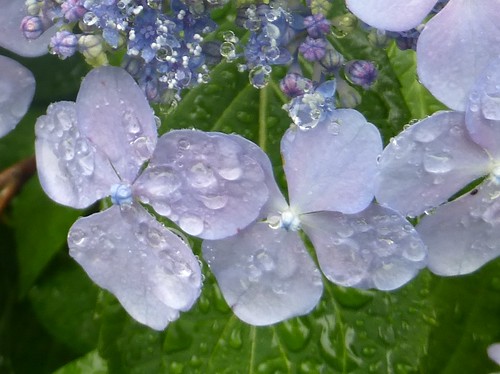
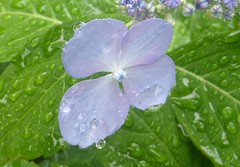
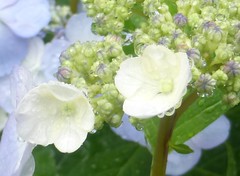
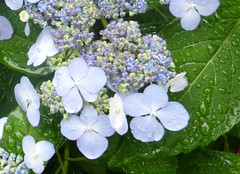

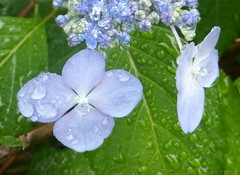
Jun 28, 2015 at 11:26 pm
Must have been Pixar, not Disney studios, that made this movie, because, as you say, it was Sadness that seemed to give meaning to the world, not sheer joy.
It seemed to me that the movie’s vision of the inner psyche was “right on,” though I’m no scientist so I don’t know if they would agree with the movie’s depiction of emotions.
LikeLike
Jun 29, 2015 at 6:18 pm
From what I understand, they DID consult psychologists to verify at least some of the science. Obviously, it’s a challenge to depict abstract things like memory-formation in a visual way, but I thought they did a decent job: good enough to get people talking!
LikeLike
Jun 29, 2015 at 2:54 am
Interesting to know that the filmmakers included Joy but not Happiness. I take joy to be an intense but ephemeral emotion, whereas happiness is a species of contentment and satisfaction, standing the test of time. You feel joy when your favorite team wins the big game, but when you look over the landscape of your life, you’re happy. My take, anyway.
LikeLike
Jun 29, 2015 at 6:21 pm
I know there was some debate over which emotions to include, with “surprise” not making the cut (for instance). But Riley’s childhood Joy is largely the intense kind, whereas my understanding of her mother’s flavor of Joy is more in keeping with what you’d term happiness, I think. The emotions in the mother’s head were very similar to one another–they all dressed like the mother, for instance, whereas Riley’s emotions had distinctive appearances. I interpreted this to mean that as we mature, our emotions “level out” and become more balanced.
LikeLike
Jun 29, 2015 at 6:55 am
as i get older, i get more puzzled ! the trailer looked like some frazzled ADD nightmare of downsized intelligence, but the photos of those pale blue-purple petals were serene and comforting !
go figure, its like you moved the rook instead of the queen ?
LikeLike
Jun 29, 2015 at 6:25 pm
Today’s children’s movies are definitely louder and more “hyper” than they were when I was a child. “Bambi” was about as exciting as it got when I was a kid, and much of that movie seems like it was shot in slow-motion compared to modern animation.
Interestingly, “Inside Out” was preceded by a short movie about a lonely volcano that was both beautiful and very mellow, with a gentle song that seemed to have an almost hypnotic effect on the children in attendance. I think it helped them calm down and focus on the feature film.
LikeLike
Jun 29, 2015 at 8:45 pm
your petals, water drops and leaves photos are way better and more true than either ‘inside out’ or ‘lava’
at some point one has to have some respect for oneself and not be caught in the plagiaristic commercial con of the downsized modern cultural intelligence !
‘lava’ just makes me cringe, knowing as i do the supreme beauty of the native pacific islander, maori and haiwaiian songs !
LikeLike
Jun 30, 2015 at 10:23 pm
“…a mother’s heart is essentially sorrowful, ever attuned to the suffering of her own or other’s children.” While I can’t speak to that directly (wouldn’t the mother’s emotion be fear in this case?), I prefer a different interpretation for the movie. Riley’s mother’s primary emotion was sadness because of something sorrowful that happened to her, rather than being Riley-centred. I imagine a miscarriage before Riley was born, or her own parents dying before they could meet Riley. Something as earth-shattering as that, but not so bad that you can’t still get joy out of life.
I’m sure there’s a subset of kids that would be worried about the implications of the need for balance internally – I know I was thinking of adult friends who permanently ‘lost’ their Joy and/or equivalent to Hockey Town and friendship area when I was watching this. As a child, I think this movie would’ve worried me a lot.
I thought the movie a little weak in parts, but still definitely top 5 of Pixar.
LikeLike
Jul 1, 2015 at 5:43 pm
I wondered (and still wonder) how a child might react to the film. A lot of it seemed pretty grown-up to me, and I agree that there are folks who seem to have lost their “Joy.” (During the end credits, I laughed out loud when they showed the inner workings of various supporting characters, such as the gridlocked bus-driver whose EVERY emotion was shaped like anger.)
I agree that parts seemed a bit far-fetched: any analogy wears thin after a certain point. But it definitely was an entertaining movie to watch, and it’s one that I have thinking about a lot since then.
LikeLike
May 22, 2021 at 11:28 pm
Hi. I’m twelve years old now, and I watched Inside Out when I was seven. I thought that Riley being happy was very sweet, but I hated ‘Joy’ because she was a dictator and a bully. However, she acted so innocent that none of the other emotions ever disliked her.
LikeLike